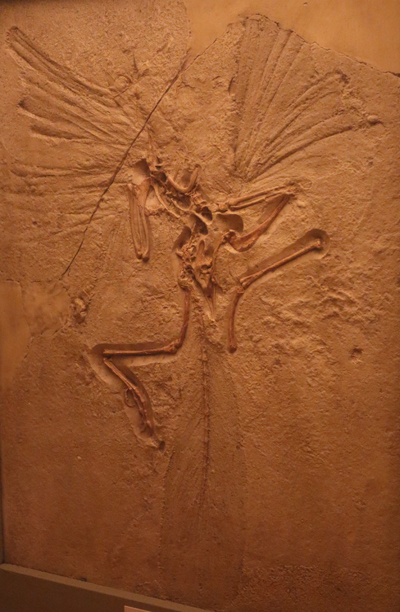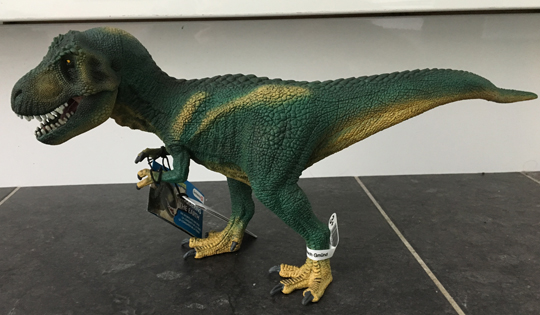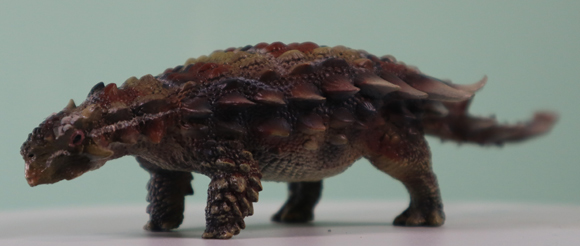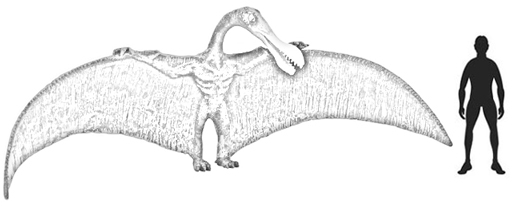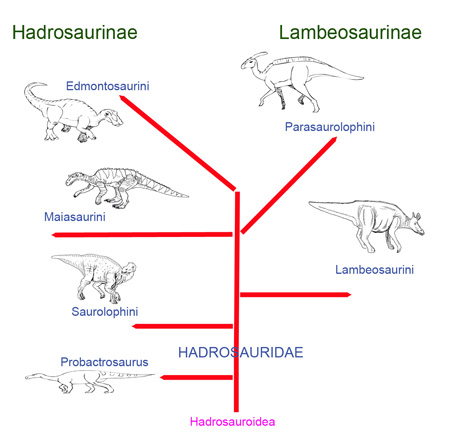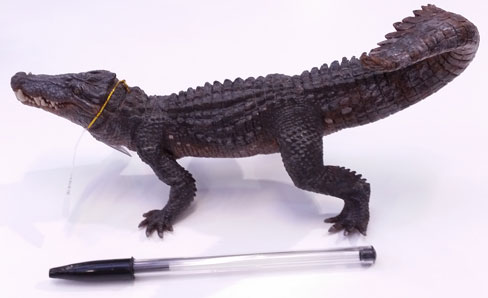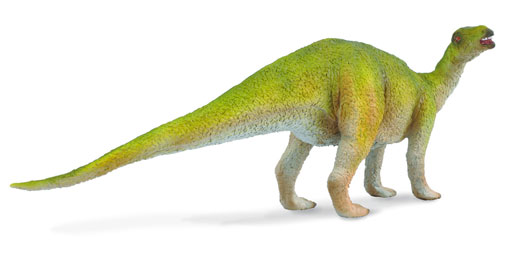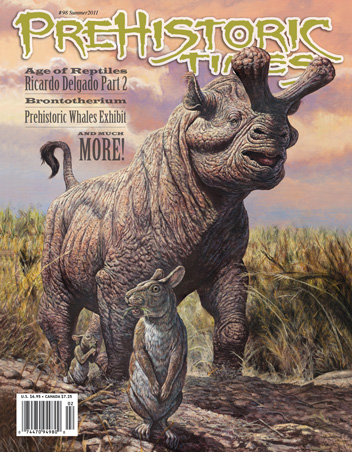Is Archaeopteryx About to Be Knocked off its Perch?
New Archaeopteryx-like Theropod Dinosaur Discovered
Researchers from the Chinese Academy of Sciences have published scientific papers describing the discovery of a new type of Jurassic theropod dinosaur which they believe is very closely related to the iconic prehistoric animal Archaeopteryx (A. lithographica). As a result, they are challenging the long held assumption that Archaeopteryx was the “very first bird”.
In 1860, just one year after Charles Darwin published “The Origin of Species”, a single fossilised feather was discovered in the finely grained lithographic limestones at Solnhofen (Bavaria, Southern Germany). An important cornerstone (no pun intended) of Darwin’s new theory was the gradual evolution of species via natural selection that would lead to new species – the search for what was to become known as “missing links” had begun. In 1861, a virtually complete skeleton of the creature that had feathers was found in southern Germany, this was to become known as Archaeopteryx an example of a “missing link” between birds and reptiles as the fossil showed characteristics of both orders. To be more precise, this transitional fossil, one of less than a ten fossils of Archaeopteryx known had a combination of reptilian and bird characters. There were of course the feathers and a breast bone, but this animal also had teeth and a long tail, just like a dinosaur. Here was a transitional form that linked one major group of animals (birds) to an older, ancestral group (the reptiles) from which it had evolved. This was evidence of Darwin’s theory – species were not immutable and Darwin had predicted that such transitional fossils would be discovered.
A Fossil Cast of Archaeopteryx
Picture credit: Everything Dinosaur
Pictures show an almost complete and perfectly preserved fossil of the Late Jurassic creature known as Archaeopteryx (A. lithographica). The feathers (a feature of birds) can clearly be seen along with the long tail (a feature of reptiles).
The Chinese scientists have identified a new species of Archaeopteryx-like theropod dinosaur from lake deposits formed about 160 million years ago in north-eastern China. According to findings published online in the scientific journal “Nature”, the new dinosaur species Xiaotingia zhengi is a close relative of Archaeopteryx, which is widely accepted as the most primitive bird, known from the fossil record. However, a phylogenetic analysis incorporating new information from this find suggests that Archaeopteryx is not a bird, which has significant implications for our understanding of bird origins the evolutionary relationship between Aves (birds) and the Reptilia.
Xiaotingia weighed about 800 grams, comparable to Archaeopteryx in size, and is one of the smallest non-avian theropod (carnivorous) dinosaurs ever identified by scientists. The fossil shows evidence of conical teeth, as well as long, robust arms that are similar to those of primitive birds. Its specialised feet have the highly extensible second toe characteristic of the Deinonychosauria, the group of bird-like dinosaurs that includes Velociraptor and Utahraptor.
Dr Xu Xing of the Institute of Vertebrate Palaeontology and Palaeoanthropology, Chinese Academy of Sciences, lead author of this paper and one of the world’s most influential dinosaur researchers stated:
“The most exciting result from our research is that both Xiaotingia and Archaeopteryx are primitive deinonychosaurs rather than birds. In other words, Archaeopteryx is a kind of Velociraptor ancestor rather than a bird ancestor.”
This research is certainly going to challenge long held views about the significance of Archaeopteryx.
It is now widely accepted that birds are descended from dinosaurs, but scientists are still working hard to reconstruct how the dinosaur-bird transition occurred. One of the most important jobs is to reconstruct a reliable family tree, based on this research, scientists can find out which dinosaurs evolved into birds and what the most primitive birds were actually like. Xu’s team has made several significant discoveries related to this fundamental issue in the study of evolution.
For models and replicas of Archaeopteryx and other feathered theropods: PNSO Feathered Dinosaurs and Prehistoric Animal Figures.
Pictures show the holotype fossil the creature’s head is to the left of the images seen in media releases.
Dr Xu explained:
“We named the four-winged dinosaur Anchiornis huxleyi in 2008. At that time we already noticed some striking similarities between Anchiornis huxleyi and Archaeopteryx, such as the presence of a long bony tail fully covered by large feathers. Xiaotingia is from the same site as Anchiornis. Like Anchiornis, it also bears long flight feathers on the feet, a feature that we suspected was also present in Archaeopteryx. The discovery of Xiaotingia provides further support for a close relationship between these species.”
We at Everything Dinosaur note the reference to Thomas Huxley in the scientific nomenclature. Thomas Huxley (1825-1895) was an English biologist who supported the ideas of Charles Darwin (he was known as “Darwin’s Bulldog”), he was one of the first scientists to realise the close anatomical links between birds and reptiles.
The researchers noticed that Archaeopteryx, Xiaotingia, and Anchiornis are more similar to other deinonychosaurs than to birds in having a lightly built skull, in stark contrast to the more robust skull seen in other known primitive birds and also the oviraptorosaurian dinosaurs. A comprehensive analysis by the researchers indicates an interesting evolutionary divergence between a primarily herbivorous lineage leading to modern birds and a carnivorous lineage leading to the likes of the fearsome Cretaceous dinosaur Velociraptor. This new pattern has significant implications for avian origins, and for related issues such as the early evolution of feathers and flight.
Archaeopteryx is perhaps, one of the most famous of all the prehistoric creatures named and described so far. Despite the paucity of fossils there is an extensive and on-going research programme based around this particular creature from the Upper Jurassic strata of Germany.
To read a recent article on Archaeopteryx research: New Fossil Study Shows Chemical Link between Reptiles and Birds.
We suspect that the feathers are about to fly once again in the world of palaeontology.
Everything Dinosaur is grateful to the Chinese Academy of Sciences for their press release information in helping to compile this article.


